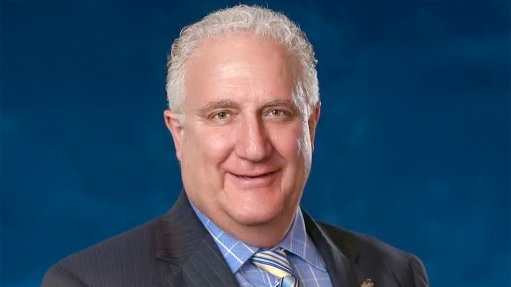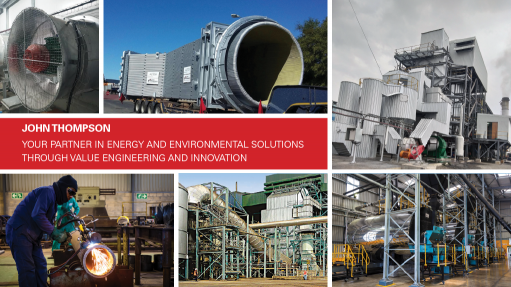Mining industry must invest in people as much as in projects
This article has been supplied.
The mining and minerals industry is at a crossroads. The dual pressures of resource scarcity and environmental sustainability, coupled with the race to decarbonization, the challenge of securing investments, and rapidly evolving market demands, are reshaping collaboration across the mineral sector.
While the global clean energy transition and decarbonization are at the top of many events, forums and national agendas, achieving the transition is heavily reliant on the supply of critical minerals. On the back of this is the question of how we can, as stakeholders in a global mineral value chain, create a resilient investment ecosystem to fuel the mineral sector’s growth.
Over my 38-year career in mining, I have worked with various commodities, such as coal, nickel and precious metals and minerals, like palladium and diamonds. My career as both CEO of De Beers and Chairman of Norilsk Nickel provided me with a deep appreciation for the intricate dynamics of mining operations, and importantly, what they need, to be established and sustainable.
The conversation on building a robust investment ecosystem needs to be had with the end goal in mind, setting the stage for decades of success and innovation where long-term growth and sustainability are guaranteed. From my perspective, it provides a foundation of stability and confidence that attracts both local and international investors, which enable the sector’s full potential.
To set the scene, let’s unpack four foundational pillars: regulatory stability, access to capital and talent, technological advancement, and sustainability.
Regulatory stability forms the bedrock of any resilient mining ecosystem. Mining projects require billions of dollars in investment and span decades, making consistent and long-term policies essential to attracting and retaining investment. Without this stability, even the most resource-rich nations struggle to secure the financial backing needed for growth. This regulatory stability is not some sort of luxury; it is a necessity for fostering a thriving industry.
Saudi Arabia offers a compelling example of regulatory reform done right. The Kingdom’s Mining Investment Law of 2020 is an example of its commitment to creating a robust and transparent framework for investors. By aligning its policies with global best practices, Saudi Arabia has positioned itself as a model for regulatory stability, as highlighted by the Mining Journal World Risk Report 2023.
Though still early in its mining journey compared to established hubs like Canada and Australia, Saudi Arabia’s approach demonstrates how continuity and predictability can transform a nation into a top investment destination.
Access to human and financial capital is another cornerstone of resilience. Mining projects require substantial financial outlays, and asset management firms like Ninety-One are pivotal in channeling investments into these ventures. Yet, financial resources alone are not enough. Human capital—skilled geologists, engineers, and technicians—are equally important. Building a robust industry requires not just securing talent but fostering it through initiatives that prioritize education, training, and capacity building.
The industry must take a bold stand by investing in people as much as in projects.
Capacity building is as integral to mining operations as investment is; it is the first step in building sustainability, scalability, and long-term success in the industry
Technology, meanwhile, is transforming the mining sector in ways that would have been unimaginable just a decade ago. Innovations in resource extraction, efficiency, and environmental management are redefining competitiveness.
Mining proponents like Robert Friedland have been vocal about the industry’s potential to explore renewable energy and other cutting-edge practices to meet its long-term goals. These innovations are not merely about staying ahead in the market—they are about ensuring the sector’s relevance in a rapidly changing world.
Lastly, sustainability must be the guiding principle for the future of mining. It’s not just about mitigating environmental impacts; it’s about embedding circularity into the industry. By sourcing locally, using energy efficiently, and reducing waste, mining companies can lower costs and build better relationships with local communities. This, in turn, will enhance their social license to operate—a key factor in gaining regulatory approval and community support.
These issues need to be solved and thinking furthered into policy and action – for that we need platforms where concrete conversations involving policymakers, industry leaders, and stakeholders can find solutions. Among the many gatherings in this field, the Future Minerals Forum (FMF) stands apart, redefining the conversation and rewriting the rules for the future of mining and minerals.
FMF pulls together government representatives from different countries and notable figures from the entire mineral value chain to Riyadh, to confront critical matters head-on and create long-term initiatives to address them.
The challenges before us are immense, but so are the opportunities. With the right frameworks, investments, and commitments, we can steer the mining sector toward a thriving future—defined by resilience, responsibility, and impact.
Gareth Penny is the Chairman of Ninety-One Plc., a global business with over $140 billion of assets under management, providing investment products and services across both developed and emerging markets.
Article Enquiry
Email Article
Save Article
Feedback
To advertise email advertising@creamermedia.co.za or click here
Announcements
What's On
Subscribe to improve your user experience...
Option 1 (equivalent of R125 a month):
Receive a weekly copy of Creamer Media's Engineering News & Mining Weekly magazine
(print copy for those in South Africa and e-magazine for those outside of South Africa)
Receive daily email newsletters
Access to full search results
Access archive of magazine back copies
Access to Projects in Progress
Access to ONE Research Report of your choice in PDF format
Option 2 (equivalent of R375 a month):
All benefits from Option 1
PLUS
Access to Creamer Media's Research Channel Africa for ALL Research Reports, in PDF format, on various industrial and mining sectors
including Electricity; Water; Energy Transition; Hydrogen; Roads, Rail and Ports; Coal; Gold; Platinum; Battery Metals; etc.
Already a subscriber?
Forgotten your password?
Receive weekly copy of Creamer Media's Engineering News & Mining Weekly magazine (print copy for those in South Africa and e-magazine for those outside of South Africa)
➕
Recieve daily email newsletters
➕
Access to full search results
➕
Access archive of magazine back copies
➕
Access to Projects in Progress
➕
Access to ONE Research Report of your choice in PDF format
RESEARCH CHANNEL AFRICA
R4500 (equivalent of R375 a month)
SUBSCRIBEAll benefits from Option 1
➕
Access to Creamer Media's Research Channel Africa for ALL Research Reports on various industrial and mining sectors, in PDF format, including on:
Electricity
➕
Water
➕
Energy Transition
➕
Hydrogen
➕
Roads, Rail and Ports
➕
Coal
➕
Gold
➕
Platinum
➕
Battery Metals
➕
etc.
Receive all benefits from Option 1 or Option 2 delivered to numerous people at your company
➕
Multiple User names and Passwords for simultaneous log-ins
➕
Intranet integration access to all in your organisation





















